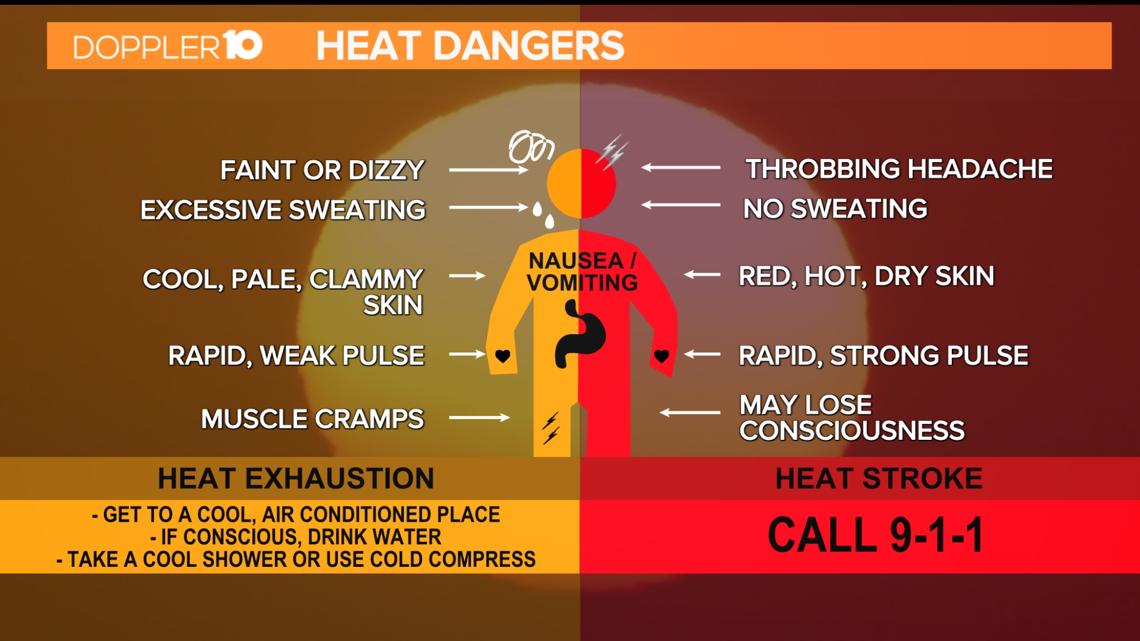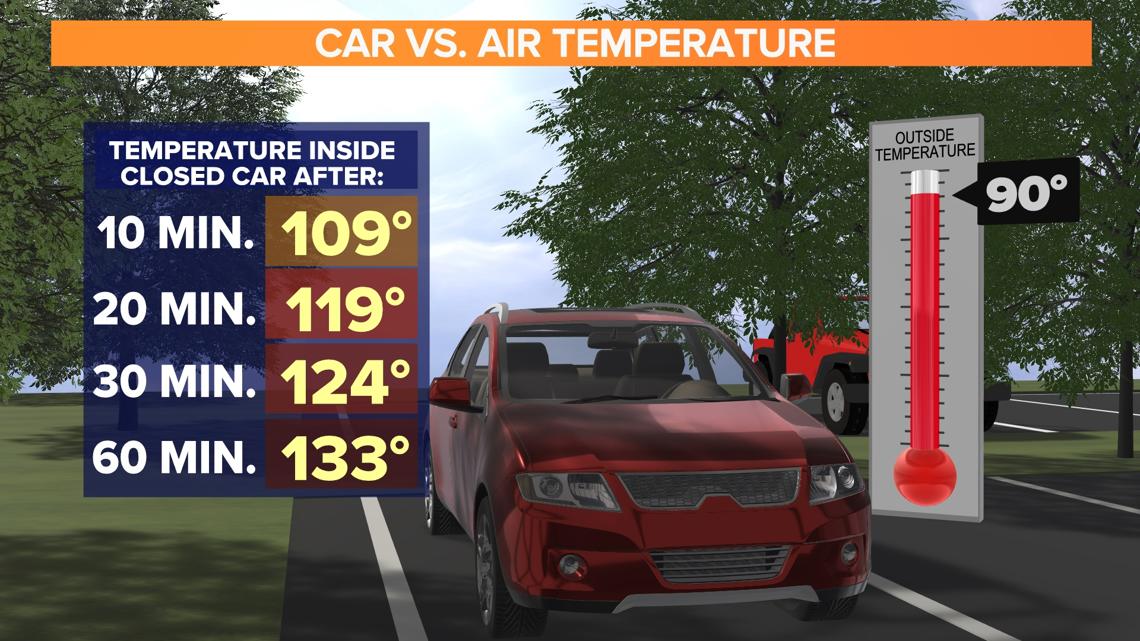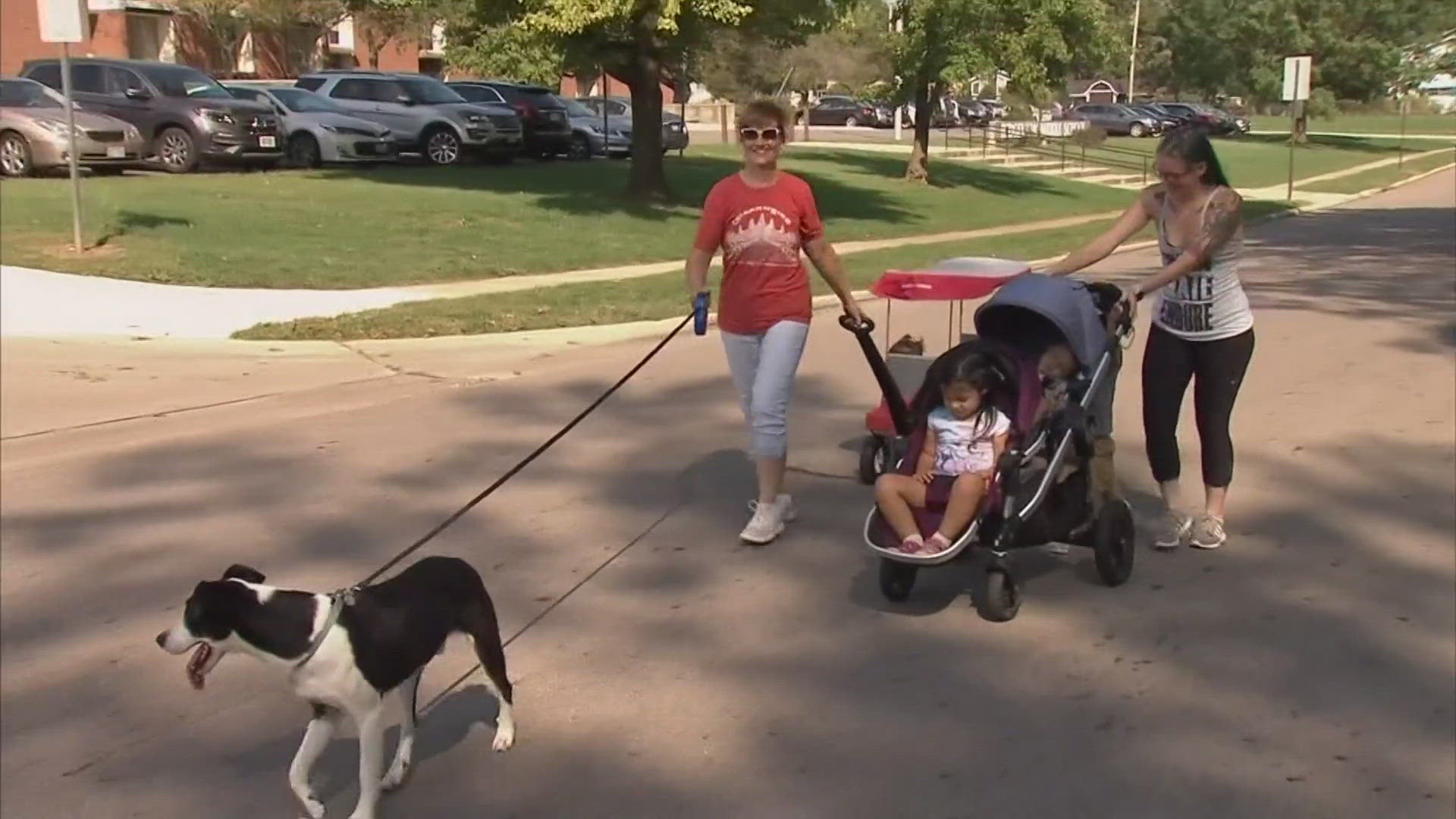COLUMBUS, Ohio — As the temperatures are expected to jump to the high 90s this week, it's important to keep the health of yourself and others in mind when spending time outdoors.
Some key reminders heading into the next heat wave: drink plenty of water, spend some time in the shade and cool off when you feel yourself getting hot and tired.


As for pets, there are some signs to look out for that will tell you they're getting too hot.
Heatstroke is not just a concern that people face, but pets can be affected as well. Here's what you need to know if you have an animal who loves being outside:
- When you take them out walking, if your dog stops, they need to stop. Let them take time to rest and cool off in the shade.
- If they're panting really heavily and their saliva is getting thick and dry, that suggests they are becoming dehydrated. Try to get them some water as soon as you can.
- Avoid long walks on the hot pavement. A good reminder is that if you can't touch the surface for more than five to 10 seconds, then it's not ideal against the paw pads and feet of your pet.
- Don't leave pets in the car when it's hot outside and limit their time outside.


- Heavy panting
- Glazed eyes
- Rapid heartbeat
- Difficulty breathing
- Excessive thirst
- Lethargy
- Dizziness
- Lack of coordination
- Profuse salivation
- Vomiting
- A deep red or purple tongue
- Seizure
- Unconsciousness
Animals are at an increased risk if they are old, very young, overweight, not conditioned to prolonged exercise or have a heart or respiratory disease. According to the Humane Society, some breeds of dogs—like boxers, pugs, shih tzus and other dogs and cats with short muzzles—will have a much harder time breathing in extreme heat.
What to do if your pet is suffering from heatstroke
The humane society says if your pet does suffer from heatstroke, move them to the shade or an air-conditioned area and apply ice packs or cold towels to their head, neck and chest area. Let them take small amounts of cool water before taking them to a vet.

